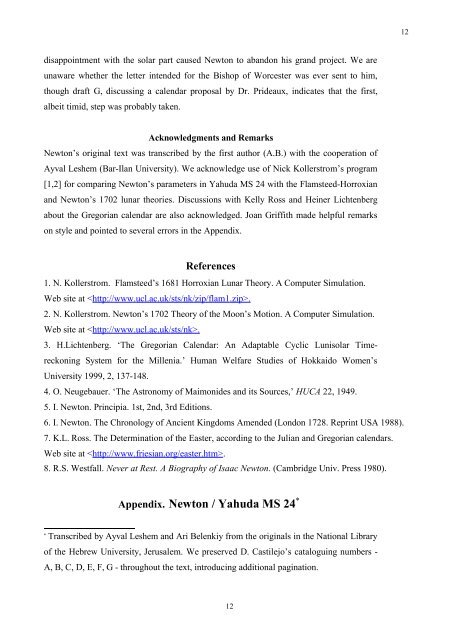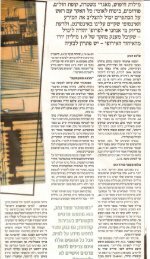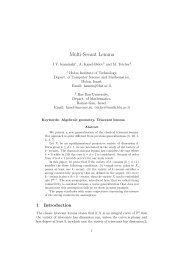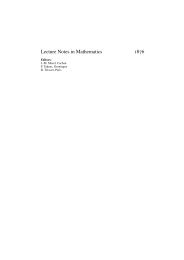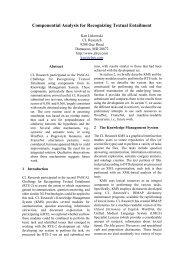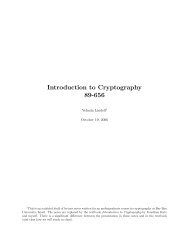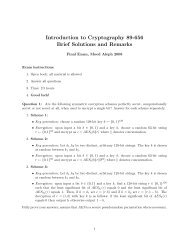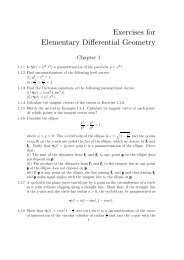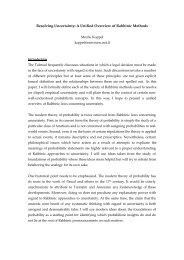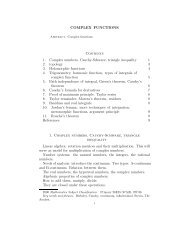Reform of the Julian Calendar as Envisioned by Isaac Newton
Reform of the Julian Calendar as Envisioned by Isaac Newton
Reform of the Julian Calendar as Envisioned by Isaac Newton
Create successful ePaper yourself
Turn your PDF publications into a flip-book with our unique Google optimized e-Paper software.
12<br />
disappointment with <strong>the</strong> solar part caused <strong>Newton</strong> to abandon his grand project. We are<br />
unaware whe<strong>the</strong>r <strong>the</strong> letter intended for <strong>the</strong> Bishop <strong>of</strong> Worcester w<strong>as</strong> ever sent to him,<br />
though draft G, discussing a calendar proposal <strong>by</strong> Dr. Prideaux, indicates that <strong>the</strong> first,<br />
albeit timid, step w<strong>as</strong> probably taken.<br />
Acknowledgments and Remarks<br />
<strong>Newton</strong>’s original text w<strong>as</strong> transcribed <strong>by</strong> <strong>the</strong> first author (A.B.) with <strong>the</strong> cooperation <strong>of</strong><br />
Ayval Leshem (Bar-Ilan University). We acknowledge use <strong>of</strong> Nick Kollerstrom’s program<br />
[1,2] for comparing <strong>Newton</strong>’s parameters in Yahuda MS 24 with <strong>the</strong> Flamsteed-Horroxian<br />
and <strong>Newton</strong>’s 1702 lunar <strong>the</strong>ories. Discussions with Kelly Ross and Heiner Lichtenberg<br />
about <strong>the</strong> Gregorian calendar are also acknowledged. Joan Griffith made helpful remarks<br />
on style and pointed to several errors in <strong>the</strong> Appendix.<br />
References<br />
1. N. Kollerstrom. Flamsteed’s 1681 Horroxian Lunar Theory. A Computer Simulation.<br />
Web site at .<br />
2. N. Kollerstrom. <strong>Newton</strong>’s 1702 Theory <strong>of</strong> <strong>the</strong> Moon’s Motion. A Computer Simulation.<br />
Web site at .<br />
3. H.Lichtenberg. ‘The Gregorian <strong>Calendar</strong>: An Adaptable Cyclic Lunisolar Timereckoning<br />
System for <strong>the</strong> Millenia.’ Human Welfare Studies <strong>of</strong> Hokkaido Women’s<br />
University 1999, 2, 137-148.<br />
4. O. Neugebauer. ‘The Astronomy <strong>of</strong> Maimonides and its Sources,’ HUCA 22, 1949.<br />
5. I. <strong>Newton</strong>. Principia. 1st, 2nd, 3rd Editions.<br />
6. I. <strong>Newton</strong>. The Chronology <strong>of</strong> Ancient Kingdoms Amended (London 1728. Reprint USA 1988).<br />
7. K.L. Ross. The Determination <strong>of</strong> <strong>the</strong> E<strong>as</strong>ter, according to <strong>the</strong> <strong>Julian</strong> and Gregorian calendars.<br />
Web site at .<br />
8. R.S. Westfall. Never at Rest. A Biography <strong>of</strong> <strong>Isaac</strong> <strong>Newton</strong>. (Cambridge Univ. Press 1980).<br />
Appendix. <strong>Newton</strong> / Yahuda MS 24 <br />
<br />
Transcribed <strong>by</strong> Ayval Leshem and Ari Belenkiy from <strong>the</strong> originals in <strong>the</strong> National Library<br />
<strong>of</strong> <strong>the</strong> Hebrew University, Jerusalem. We preserved D. C<strong>as</strong>tilejo’s cataloguing numbers -<br />
A, B, C, D, E, F, G - throughout <strong>the</strong> text, introducing additional pagination.<br />
12


